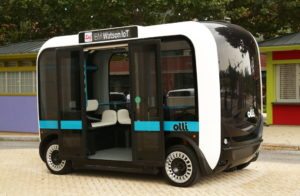There may be no more appropriate place in the United States than New York City for a discussion on network densification and the challenges of “5G.” ZenFi, a dark fiber backhaul company claiming to have the first solution of its kind deployed specifically to support densification and enable the “internet of things,” is taking that challenge head-on, with plans to fill the sprawling concrete jungle that makes up the five boroughs with fiber hidden deep in its core.
ZenFi provides backhaul fiber and passive wavelength connectivity to colocation facilities throughout the New York metro area, as well as to macro sites, small cells and Wi-Fi nodes. ZenFi’s backhaul solutions connect carrier and enterprise aggregation points back to their core network facilities and common carrier services collocated at carrier hotels.
“The massive densification of the wireless networks requires antenna facilities just about everywhere, and those antenna facilities need to be connected back to the core network,” said Ray LaChance, president and CEO of Zenfi. “When we look at fiber connectivity, which is the preferred method of connecting these antennas back to support mobile densification, we see that the legacy fiber networks just weren’t built to support this level of fiber requirement, this density and accessibility.”
Unlike legacy fiber providers who build out carrier hotel connections piecemeal over time, ZenFi’s Express network implements multiple paths with high-density carrier hotel terminations at the onset in order to provide backhaul connectivity. High-bandwidth connectivity to mobile communication antennas is a critical component for the enablement of 5G, and IoT. According to ZenFi, fiber is fiber – as long as it’s in the ground it’s useful. Thus, a dark fiber-rich city like New York is well-suited to support the bandwidth requirements of IoT.
Legacy networks in New York City have been built as expressways, not flexible enough to support the densification requirements of carriers and enable IoT, according to ZenFi. The company’s access network is designed to expand the expressways by increasing the number of on- and off-ramps to the locations customers want to reach.
“The way we see the network being architected for 5G – it’s a network of neighborhood networks,” LaChance said. “We envision a network with a central collocation facility and you reach out and touch antenna locations in close proximity to that close location. This allows carriers to deliver very high capacity at very low latency between base station processing and remote radios and antenna locations.”
ZenFi splits its network into two parts, the Access Network and the Express Network. The Express Network is the highway of the company’s fiber foundation, designed to link neutral data centers, carrier hotels and enterprise establishments, while the Access Network was built to support a more flexible, wide distribution of wireless interconnections and collocations for IoT and 5G.
The company’s vision is for its carrier-neutral dark fiber network to make New York a city filled with open access fiber to support distributed antenna systems; small cells and macro sites designed to enhance the wireless carrier network; and enable IoT.

